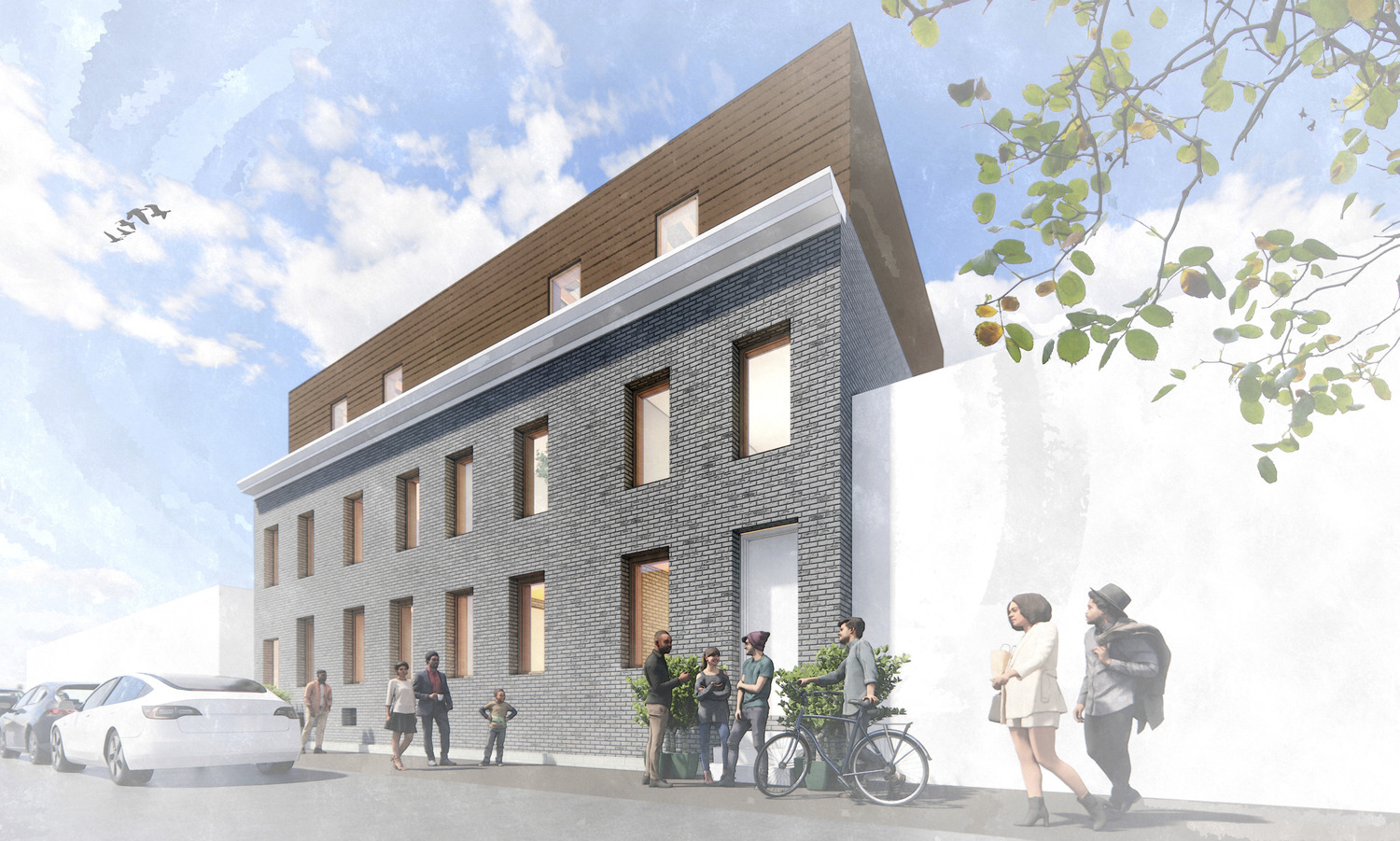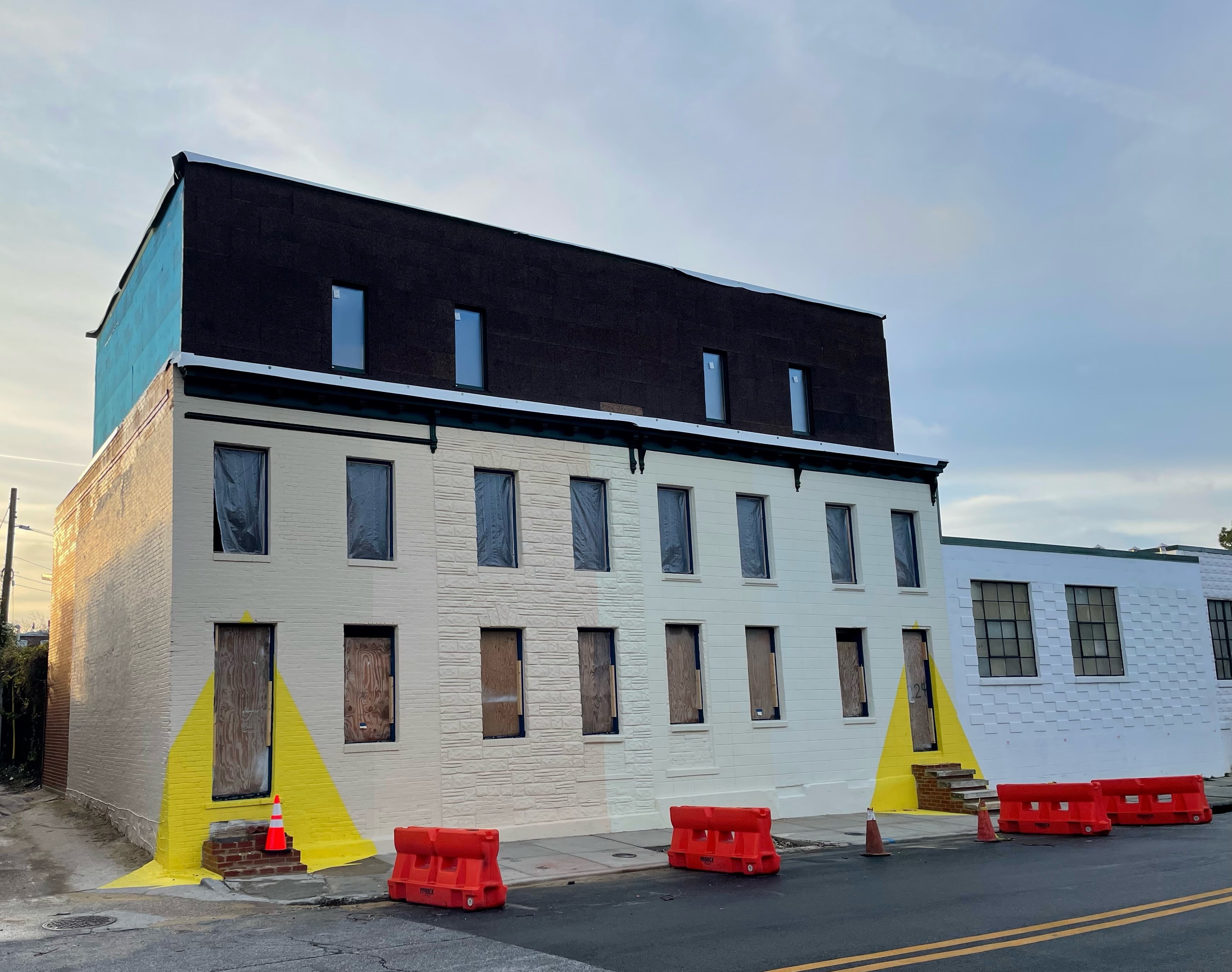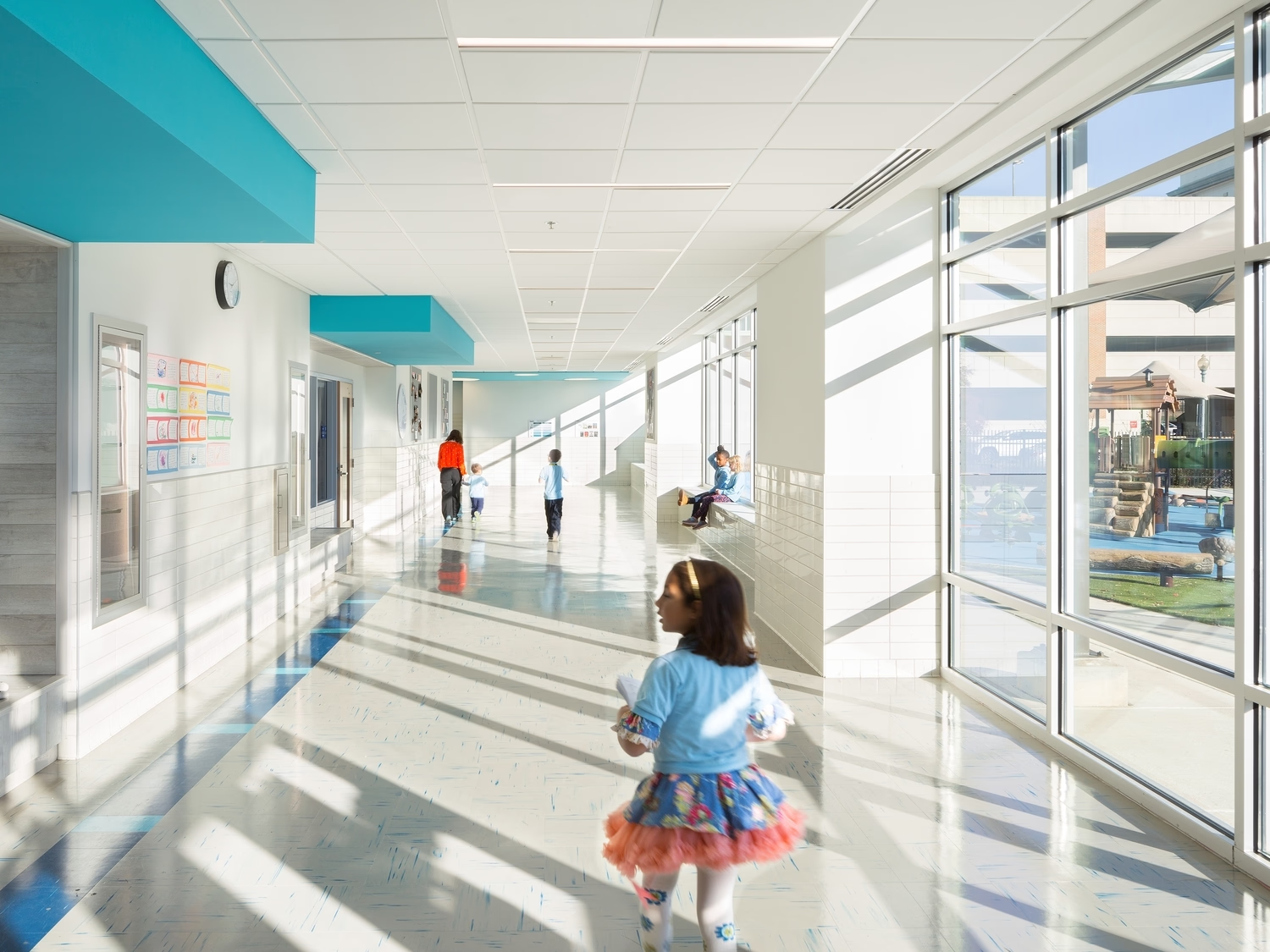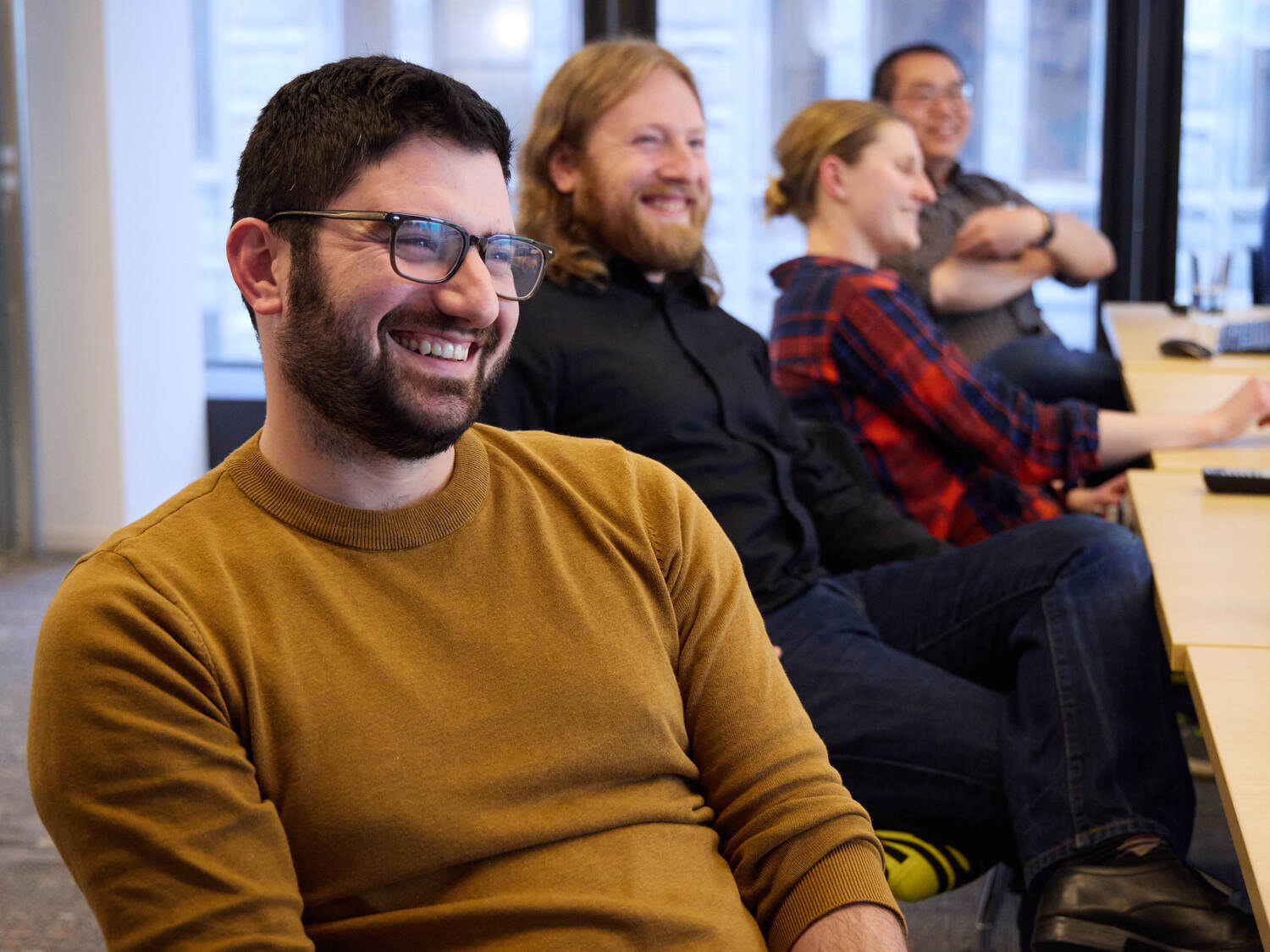Passive House Promotes High-Efficiency and Wellness Standards at Artist Collective
In the development of a new project for the Compound, a non-profit artist collective, Quinn Evans worked closely with the City of Baltimore and the Compound co-founder Nick Wisniewski to meet the Passive House standard (Phius). Phius is an aspirational and innovative standard for project design, and even more so when applied to existing buildings. It requires precertification to implement the highest performing standards with proof points. The highly collaborative dynamic between Quinn Evans and Nick made it possible to design an inclusive and high-performance space that will make a difference to the community.

Located in Baltimore's Midway neighborhood, this project combines four derelict row homes into two live-work units for artists. With a focus on energy efficiency, Phius requires tight air-sealing, super-insulating detailing, and ultra-high efficiency mechanical systems that will bring these revitalized buildings close to net-zero energy consumption while promoting wellness for the tenants.
Quinn Evans architect and passive house expert David Gavin, AIA, CPHC, had a conversation with Nick to discuss why Passive House was a great fit for the Compound, the benefit of reusing existing buildings, and how projects like this can be repeated in the future for a lasting impact.

D: For more than 10 years, you have been championing the arts and fostering community engagement in the East Baltimore Midway neighborhood as an artist, craftsperson, and founder of the Compound. How did you decide to make the leap to Passive House construction?
N: The move to Passive House construction felt like a natural next step for the Compound. Before buying the property at 2239 Kirk Avenue, I and a group of other artists—working under the name Baltimore Development Cooperative (BDC)—had been interested in ecological practice and radical, experimental approaches to living in the city. For several seasons, we supported Participation Park in Johnston Square, a squatted vacant lot where we practiced permaculture growing and community participation through shared land. At the Compound, we continued these efforts, installing a greywater system, rainwater collection, energy-efficient heating, and cooperatively run permaculture gardens. When the row house project came up, it was an obvious opportunity to push these practices further.
D: How did our professional relationship assist in taking this endeavor from an idea to an active project?
N: Prior to 2019, all construction and design at the Compound had been done on a DIY basis. We were able to accomplish a lot through this approach—the retrofitting of a former forklift factory into communal live-work space, the new construction of a woodshop, and the development of office and event space. But the passive house construction presented a new challenge. First, we needed a licensed architect in order to complete this work to code. Second, the construction methods for passive houses are complex and highly specific. We had no previous knowledge of the process; that was where Quinn Evans was critical. You brought your knowledge of passive building assembly and the requirements for Phius certification and were to apply them thoughtfully to our concept for the project.
D: As someone who already has experience in the reuse of existing buildings with the Compound’s community hub, what makes the Passive House detailing and construction of the existing rowhouses unique?
N: Our concept for the row houses was really aspirational. We wanted to construct a highly energy efficient, affordable live-work space that built on more than a decade of knowledge about the complexity of living and working communally. The result was a hybrid floor plan that allows for a combination of individual living and studio arrangements and communal arrangements in the same space.
This is critical to the life of the Compound. Communal living is rooted in artists’ need for affordable, flexible space, and it's also been our experience that artists energize each other when working in close proximity—discursively and spatially. But the long-term challenges of communal living are real. We felt like, with the new space, offering more definition around communal spaces and private spaces would facilitate a stronger, more flexible community.
D: Once completed, what kinds of opportunities will the Compound Rowhouses offer, and how will the passive design of the building enhance those opportunities?
N: The demand for more affordable space, both for living and creating work, is real. We’ve always had a bigger demand for space than we can accommodate. So, we’re glad that more people will have access to space to make art in Baltimore. If you’ve followed the news this last year, there’s a real crisis in the city when it comes to artists finding space they can afford. So, we see this as an urgent project.
In addition to the added space, the new rowhouses will include room for an artist residency, which we hope to start in 2023. This has been a long-standing ambition for the Compound, but we just haven’t had the right space for it until now.
Right now, Compound rooms rent for between $375 and $550 [per month]. The new spaces will include small studios that are available even more affordable, at around $150 [per month]. We feel really strongly about keeping these spaces inexpensive. At the same time, the additional rental income from the new units will allow us to expand the Compound’s community efforts. Our goal is to use additional rental income to hire a community programs manager. This person will support more regular public programming that will make the Compound an asset to everyone in East Baltimore Midway.
Finally, we hope to demonstrate that Passive House construction is a possibility in all Baltimore neighborhoods. These buildings will both be environmentally sustainable and less costly to operate, since they’ll generate the majority of their own energy. Those benefits and savings will be passed on to tenants.
D: What are the most impactful elements that were incorporated into the Passive House design requirements?
N: When we started the Passive House project, it was almost impossible to find contractors who were familiar with the passive installation and construction methods. Everyone had to be trained in the process, from the mason and framers to the roofers and the mechanical tradespeople. The result is that there’s now a group of contractors in Baltimore who have these skills and can apply them to future projects.
D: How does a project like this get funded? Does Passive House create opportunities for project funding that might otherwise be competitive or even unavailable?
N: Our project is supported by grants from the State of Maryland as well as private foundations in Baltimore City. Even though this isa novel project, with big implications for the possibility of “green” building, it’s been challenging to fundraise. Most of the project supporters were already people familiar with the Compound project, who had seen what we were capable of doing on a small budget. We’d love to tap into support that’s specifically interested in the passive building element of the project, but we just haven’t made connections with those funders yet.
D: What’s next? Has going through this initial Passive House buildout influenced your thinking about sustainability and construction? Can you see this process becoming a development model for other rehabs throughout the city and beyond?
N: Modeling healthy, high-quality housing for our community and neighborhood is a major motivation for working with passive buildings. Many Baltimore artists and also many Midway residents don’t have a lot of financial power, and our neighborhood is one that has been disinvested for decades. Neighborhoods like Midway have put up with substandard housing for a long time. We wanted to upend this trend and show that these two overlapping groups actually deserve the highest quality housing in terms of environmental health, functionality, and beauty—that’s also affordable. We hope that it’s an example of what’s possible in Baltimore.







